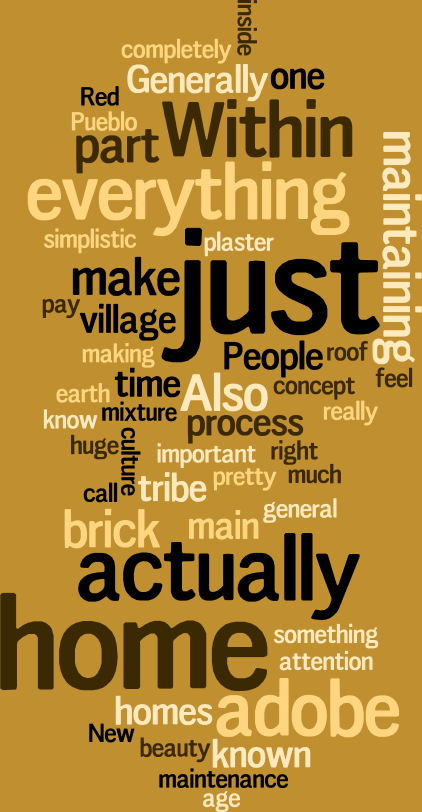|
My name is Katari Abetha. Within my tribe, I'm known as Sunflower New Moon, and here we are in Taos Pueblo, my home. This village is over 1,000 years old. Here, within our beliefs, we feel that this is the beginning of time. This is where everything itself began to take shift. And right here I am in front of my family's home. And actually, we are on the race track of part of the village. And everything here is actually built out of adobe, water, and straw. What we do is we pour the mixture into a long, rectangular mold with about 10 different sections. Each section is about 6 inches deep. And we let the mixture set for a few days or so. And once it is dry, we have what we call adobes, which are the bricks that the homes are made out of. And what we do is we put a foundation of adobe brick on the bottom layer. And what we do is we plaster with a certain amount of mud on top and make it a nice, flat surface for the floor of the home. And then we just build on the inside, from the inside out. Generally, the walls themselves will only be one adobe brick thick. And just depending on how each family maintains their home, each home probably contains about more than over 100 layers of adobe plaster itself, because we do repair our homes very regularly.
Also, the vegas that you will see sticking out on the rooftops, they're actually river birch trees. We run vegas along the sides on the insides, just making a brace for the roof. Also, everything here is actually all done very simplistic. Aspects such as doors and windows, they were actually something that was brought new to our tribe. Previously, the way we would enter our homes would actually be on top of the roof, climb up a ladder and down into the home. And the main reason for that was because we feel that we emerge from out of the earth. So, maintaining that concept, as part of having everything, all the material, be just completely natural, and we're coming out of the earth, always maintaining that concept. So, in general, here, we try to keep the lifestyle very simplistic, we live completely for the land in maintaining its beauty, and the sacredness to us. Here we are classified as Taos Pueblo, but also known as People of the Red Willow to our brothers and sisters in the South, and that's just for the water source that runs right through the main plaza of our village. And also, we actually call home Th'eat'a in our language, and that within itself means 'Place of the Red Willows'.
A majority of our maintenance process here, and the building itself, is pretty much well-known throughout the tribe. Generally, we try to encourage our youth before they reach the age of 16 that they do know how to make adobe brick, because that within itself is a very important legacy of our people here. Just because that within itself is maintaining the culture at the same time as the beauty of home. So, generally, adobe brick, and the process of making the home, and the process of plastering, is pretty much known by all youth, by the time they are reaching the age 16. So in general, that within itself is just something we have to make a huge priority and a conscious effort to maintain that and make sure that doesn't get lost, just because that is one of the main ways that our people survive, just by doing everything orally. And here, you have to really, really pay attention to the culture itself, just because, you miss one part of it, and it's a huge step back, just because everything is handed down to you. So for you to forget, or not pay attention, is representing a form of weakness, or disrespect on your part. So it's very important that you know what's going on here, and the maintenance of the home itself.
|
|



